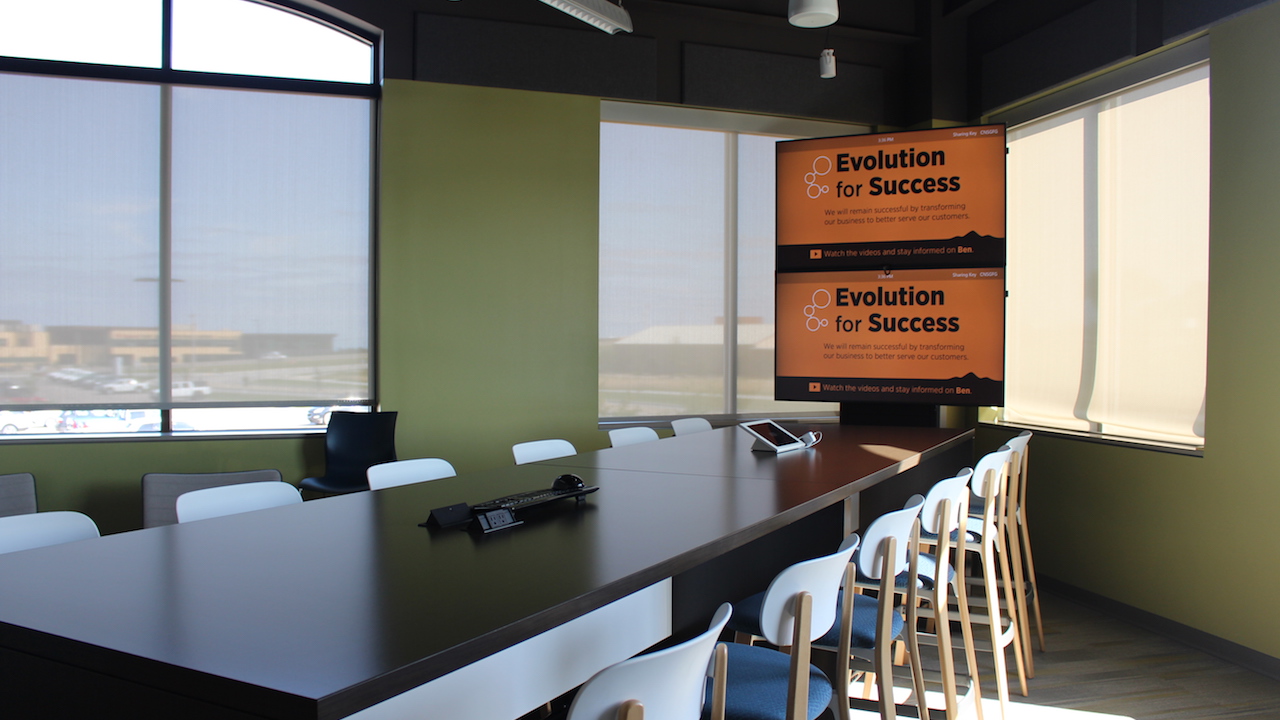Black Hills Energy Improves Virtual Meetings With Jabra PanaCast Cameras

With roughly 200 local offices serving more than 27 million mostly rural customers, utility company Black Hills Energy relies heavily on videoconferencing for employee collaboration and communication. Over a recent six-month period, the company logged a total of 8.8 million meeting minutes across more than 29,000 meetings. In order to maximize meeting efficiency and provide all employees with a better collaboration experience, the company has standardized its meeting rooms with Jabra PanaCast cameras that offer 180-degree video coverage and plug-and-play simplicity.
According to Brandon Olsen, manager, unified communications at Black Hills Energy, it’s crucial to maximize the efficiency and simplicity of the company’s meeting spaces and digital tools. Like many other companies today, most Black Hills Energy employees join videoconferences from small meeting rooms or huddle rooms that seat six to eight participants around a table and include a wall-mounted display, video camera, and microphone.
“Our goal is to deliver a high-quality user experience across the enterprise,” Olsen said. “When employees use a conference room at any of our diverse facility locations, they should expect a consistent and reliably great videoconferencing experience. PanaCast helps us deliver that experience with their Intelligent Zoom technology and a 180-degree field of view.”
The 180-degree field of view is what first caught Olsen’s eye when he began looking for a better small-room camera solution three years ago. Since first testing Jabra’s unique PanaCast cameras, which utilize three camera lenses and integrated artificial intelligence to create an ultra-wide 180-degree view, Black Hills Energy has integrated more than 50 PanaCast cameras into meeting rooms at its Rapid City, SD headquarters, and another 50 throughout various satellite offices. The company plans to convert every videoconferencing room at every location, leaving about 100 to be outfitted with PanaCast cameras in the future.
Olsen explained that meeting rooms developed around the PanaCast camera are more cost effective than their previous standardized solution, which relied on expensive components from a traditional enterprise solutions manufacturer. In addition to cutting purchase and maintenance costs, the marriage of PanaCast cameras and the Zoom platform enable instant meetings with no setup or technical knowledge required.
“We developed the PanaCast camera in order to improve every aspect of videoconferencing, from setup speed to video quality,” said Aurangzeb Khan, Jabra senior vice president of intelligent vision systems. “PanaCast cameras help companies like Black Hills Energy utilize smaller spaces for videoconferencing, save significant time and money on setup and operation, and improve engagement through advanced features such as Intelligent Zoom that require no input from meeting participants.”
When activated, PanaCast’s Intelligent Zoom feature uses artificial intelligence to adjust the field of view to include all participants in the conversation.
A daily selection of features, industry news, and analysis for AV/IT professionals. Sign up below.
Olsen explained that even without considering the large cost and time savings, videoconferencing is critical for the company’s interoffice communications, especially in winter when some offices located in the Rocky Mountains can be cut off by snowfall for several days. Currently, employees can book a meeting room through scheduling software on an iPad located in each room. Olsen is excited to see what features PanaCast introduces in the future, such as proximity sensing that could help automate workflows and eliminate the need for other peripherals.
The AVNetwork staff are storytellers focused on the professional audiovisual and technology industry. Their mission is to keep readers up-to-date on the latest AV/IT industry and product news, emerging trends, and inspiring installations.
